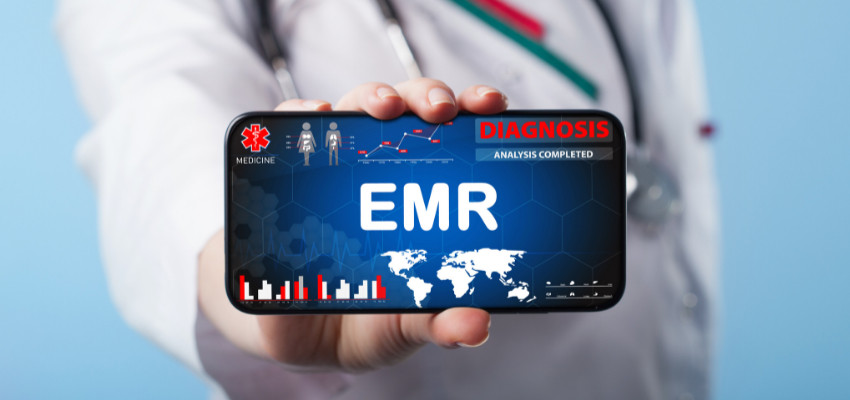Show:
7 Ways to Get Precise Location-Based Insights for Logistics and Manufacturing
Precision in operations can make the difference between success and stagnation. Accurate location-based insights empower businesses to optimize their processes, reduce costs, and enhance overall efficiency. By leveraging advanced technologies and strategic approaches, companies can gain a deeper view of their operations. Here are seven effective methods to achieve precise location-based insights in these industries.

Implement Real-Time Tracking Systems
Real-time tracking systems are foundational for obtaining accurate location data in logistics and manufacturing. These systems utilize GPS and RFID technologies to monitor the movement of goods, vehicles, and equipment continuously. By capturing real-time data, businesses can pinpoint the exact location of assets at any given moment. For manufacturing facilities, integrating indoor positioning systems can enhance the visibility of materials and machinery within the plant. This detailed tracking allows for immediate responses to delays or disruptions, ensuring smoother operations and timely deliveries.
Real-time tracking facilitates better coordination among different departments. For example, if a shipment is delayed, the production schedule can be adjusted accordingly to prevent bottlenecks. Real-time data helps in maintaining security by monitoring unauthorized movements of valuable assets.
Utilize Geographic Information Systems (GIS)
Geographic Information Systems (GIS) provide a comprehensive platform for mapping and analyzing spatial data. In logistics, GIS can optimize route planning by identifying the most efficient paths, considering factors like traffic, weather, and road conditions. For manufacturing, GIS helps in site selection and layout planning by analyzing geographical factors and proximity to suppliers and markets. The ability to visualize data geographically enables better decision-making and strategic planning, leading to improved operational efficiency and reduced costs.
Beyond route optimization, GIS can also assist in disaster management and contingency planning. By understanding the geographical distribution of assets, companies can develop strategies to mitigate risks associated with natural disasters or geopolitical issues.
Leverage Internet of Things (IoT) Devices
IoT devices are instrumental in collecting precise location-based data across logistics and manufacturing environments. Sensors embedded in vehicles, machinery, and storage units can transmit real-time information about their location, status, and environmental conditions. This continuous data flow allows for proactive maintenance, inventory management, and workflow optimization. For example, in a warehouse, IoT-enabled devices can track the movement of inventory, ensuring accurate stock levels and minimizing the risk of overstocking or stockouts.
IoT devices can monitor environmental conditions such as temperature and humidity, which is particularly important for sensitive goods. In manufacturing, IoT can track machine performance and usage patterns, enabling predictive maintenance and extending equipment lifespan.

Integrate Advanced Analytics and Machine Learning
Advanced analytics and machine learning algorithms can process large volumes of location-based data to uncover patterns and insights that might not be immediately apparent. By analyzing historical and real-time data, these technologies can predict demand trends, optimize supply chains, and enhance resource allocation. In manufacturing, predictive analytics can forecast equipment failures based on usage patterns and location data, enabling preventive maintenance and reducing downtime. Similarly, in logistics, machine learning can optimize delivery routes and schedules, improving efficiency and customer satisfaction.
Machine learning models can also identify inefficiencies in the supply chain by analyzing the movement of goods and materials. For instance, they can detect recurring delays in specific routes or pinpoint areas where inventory is consistently overstocked. These insights allow businesses to make informed decisions to streamline operations and reduce costs.
Adopt Cloud-Based Location Services
Cloud-based location services offer scalable and flexible solutions for managing location data in logistics and manufacturing. These platforms provide centralized access to location information, enabling seamless integration with other business systems such as Enterprise Resource Planning (ERP) and Warehouse Management Systems (WMS). Cloud services also facilitate real-time data sharing and collaboration across different departments and locations. This connectivity ensures that all stakeholders have access to accurate and up-to-date location information, enhancing coordination and operational efficiency.
Cloud-based solutions also support data storage and processing capabilities that are essential for handling large datasets generated by location-tracking systems. They provide the infrastructure needed to deploy advanced analytics and machine learning models without significant upfront investments in hardware.
Employ Augmented Reality (AR) for Enhanced Visualization
Augmented Reality (AR) can transform how location-based data is visualized and utilized in manufacturing and logistics. By overlaying digital information onto the physical environment, AR provides a more intuitive and interactive way to monitor and manage assets. For instance, warehouse workers can use AR glasses to locate specific items quickly, improving picking accuracy and reducing retrieval times. In manufacturing, AR can assist in assembly processes by displaying real-time location data and instructions, enhancing precision, and reducing errors.
AR can also be used for training and maintenance purposes. New employees can receive guided instructions through AR interfaces, speeding up the onboarding process. Maintenance teams can use AR to visualize the location and status of machinery, facilitating quicker diagnostics and repairs.
Implement Blockchain for Secure Location Data Management
Blockchain technology offers a secure and transparent method for managing location-based data in logistics and manufacturing. By creating an immutable ledger of all location transactions, blockchain ensures data integrity and traceability. This is particularly valuable for supply chain management, where verifying the movement and origin of goods is critical. Blockchain can also facilitate smart contracts that automatically execute based on location data, streamlining operations and reducing the need for manual intervention. The enhanced security and reliability of blockchain make it a valuable tool for maintaining accurate and trustworthy location insights.
In addition to tracking and verification, blockchain can improve collaboration among different stakeholders in the supply chain. Since all parties have access to the same transparent data, it reduces disputes and enhances trust. Blockchain also supports compliance by providing a clear and tamper-proof record of all location-related transactions, making it easier to meet regulatory requirements and standards.
Accurate location-based insights are indispensable for optimizing operations in logistics and manufacturing. By implementing real-time tracking systems, leveraging GIS, utilizing IoT devices, integrating advanced analytics, adopting cloud-based services, employing AR, and utilizing blockchain technology, businesses can achieve a higher level of precision in their operations. These methods enhance efficiency, reduce costs, and provide a competitive edge in the dynamic market landscape. Embracing these strategies will enable companies to navigate challenges effectively and drive sustained growth.

 Return to Previous Page
Return to Previous Page








